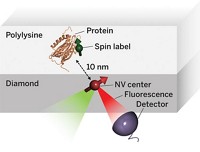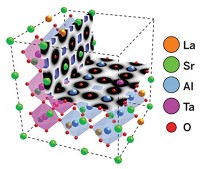Advertisement
Grab your lab coat. Let's get started
Welcome!
Welcome!
Create an account below to get 6 C&EN articles per month, receive newsletters and more - all free.
It seems this is your first time logging in online. Please enter the following information to continue.
As an ACS member you automatically get access to this site. All we need is few more details to create your reading experience.
Not you? Sign in with a different account.
Not you? Sign in with a different account.
ERROR 1
ERROR 1
ERROR 2
ERROR 2
ERROR 2
ERROR 2
ERROR 2
Password and Confirm password must match.
If you have an ACS member number, please enter it here so we can link this account to your membership. (optional)
ERROR 2
ACS values your privacy. By submitting your information, you are gaining access to C&EN and subscribing to our weekly newsletter. We use the information you provide to make your reading experience better, and we will never sell your data to third party members.
Analytical Chemistry
Nanoscale NMR Advances
Technique detects various nuclei, structural features
by Jyllian Kemsley
January 12, 2015
| A version of this story appeared in
Volume 93, Issue 2
With an eye toward getting chemical and three-dimensional structural information from individual biomolecules or nanoscale features of a material, three research groups report advances in using diamond defects as NMR detectors under ambient conditions (Nat. Nanotechnol. 2014, DOI: 10.1038/nnano.2014.288 and 2015, DOI: 10.1038/nnano.2014.299 and 10.1038/nnano.2014.313). The diamond defects are called NV centers and consist of a nitrogen atom and an adjacent lattice vacancy in place of a pair of adjacent carbon atoms. The fluorescence from NV centers is sensitive to magnetic fields emanating from just outside the diamond. Researchers previously demonstrated that the centers could be used to detect NMR signals of polymer hydrogens in sample volumes as small as 5 nm3. In the new work, teams led by Daniel Rugar of IBM, Friedemann Reinhard and Jörg Wrachtrup of Germany’s University of Stuttgart, and Ronald L. Walsworth of Harvard University demonstrate that the centers can sense and distinguish between 1H, 19F, and 31P signals. The researchers were also able to produce 2-D structural images with submicrometer resolution. All three teams scanned samples across individual NV centers. Walsworth’s group also used an ensemble of centers and a charge-coupled device camera to image multiple nuclear species in a region measuring 50 µm2.




Join the conversation
Contact the reporter
Submit a Letter to the Editor for publication
Engage with us on Twitter